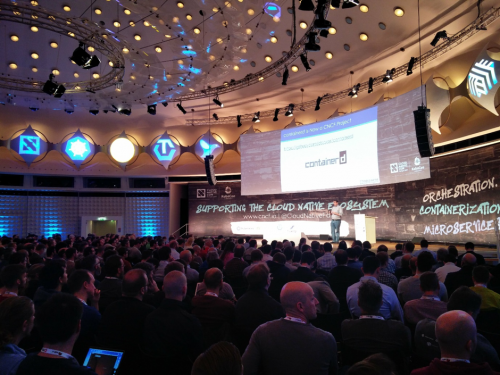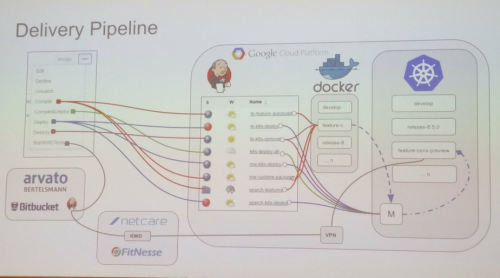
The recent CNCF CloudNative 2017 conference in Berlin played host to the crème de la crème of IT, niche container-focused software vendors, and integrators. All of them came equipped with their most switched-on engineers and marketers (intentionally leaving the usual marketing glaze behind).
I was there with the Cisco team to help demo Cisco’s 2nd most important container-related work. The first one being this.
But within just 1 hour into the keynote, I had a great answer to a question that has been bugging me for the last few months:
…DevOps, developers, architects, infrastructure managers, platform managers, whatever you call them. These are the people who are changing the industry from one that’s infrastructure-led to one guided by applications.
Crucially, applications (or software) is where business outcomes, line-of-business users and customer interaction intersects.
People don’t interact directly with hardware (or at least, they shouldn’t).
A new kind of buyer is driving innovation
The event was well-organised, with a compact setup at a well-catered for and excellent venue. More importantly, there was consistency and focus. The open-source community was there for knowledge exchange, not festivities. The fact the event was sold out with 1,500 attendees that paid a fair sum to be there underlined their dedication.
Because with this specific audience there wasn’t really a need for selling or persuasion. Rather, it’s about having realistic conversations on what’s possible – what’s new, more efficient, more resilient, faster, more secure, and offers seamless integration. It was about sharing hands-on challenges from the end-user’s perspective on real, complex and forward-thinking projects happening NOW.
This generation instinctively will pick and mix from what’s readily available in the multi-cloud industry. Big brands and cool new start-ups are the same in their eyes. It’s all about optimising outcomes.
What was fascinating, was that terms such as ‘cloud’ and ‘hybrid’ were rarely referenced. That was because there was no need. This new kind of tech buyer understands how the trends are being used and sometimes misused. They talk hands-on and specifics – i.e. developing software and scaling, launching efficient services, as well as the means (on-premise or provider-based Kubernetes infrastructure, or Kubernetes-as-a-Service etc.).
In a few words, combining the business and what we have been traditionally calling the ‘IT’ perspective.
During the two days, we heard from large European-based banks, as well as smaller organisations across different industries – telcos, verticalised SaaS vendors and, of course, vendors such as Cisco, Google and IBM sharing their progress with containers.
I highly recommend taking a look through the presentations available here.
The Cisco team focused on our contribution to the open-source community and specifically about our innovation in containers from a network perspective – a free module that replaces and adds to the Docker and Kubernetes default one, Contiv. Yes, there are some enhanced features when paired with ACI, but it will work with any infrastructure to make your network fabric more aware of what your containers are doing, how they communicate based on policies, and over which networks. One of the key benefits is its ability to extend networking across heterogeneous environments (bare metal, VMs and containers.
See here how you can get Contiv up and running in just minutes.
We also shared our experiences on how Cisco’s DevNet community uses containers.
Our continuous investment in this kind of innovation (as well as this kind by the way J) strongly aligns with our vision to make any part of the infrastructure more intelligent, application-aware and align better with business outcomes (without necessarily having to build or purchase more of it).
If you don’t have a team already looking into cloud-native development and trends, act now!
Those responsible for application development, platform or cloud infrastructure management in your organisation may well already have a view on making your infrastructure and apps work better together.
Whatever your application requirement is (small or large), wherever it might be running (on-premise or with a cloud provider), significant benefits in efficiency, cost and control await.
Thanks to all those who took the time to stop by the Cisco booth and chat with us at CNCF CloudNative 2017. We hope to see you again soon!






